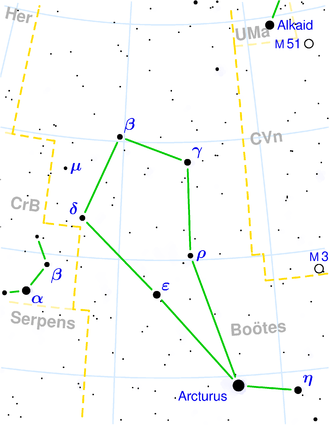NGC 5771
| Galaxy NGC 5771 |
|
|---|---|

|
|
| SDSS recording | |
| AladinLite | |
| Constellation | Bear keeper |
|
Position equinox : J2000.0 , epoch : J2000.0 |
|
| Right ascension | 14 h 52 m 14.3 s |
| declination | + 29 ° 50 ′ 44 ″ |
| Appearance | |
| Morphological type | E1 |
| Brightness (visual) | 13.6 mag |
| Brightness (B-band) | 14.6 mag |
| Angular expansion | 0.8 ′ × 0.7 ′ |
| Position angle | 153 ° |
| Surface brightness | 13.0 mag / arcmin² |
| Physical data | |
| Redshift | 0.022896 ± 0.000073 |
| Radial velocity | (6864 ± 22) km / s |
|
Stroke distance v rad / H 0 |
(311 ± 22) x 10 6 ly (95.2 ± 6.7) Mpc |
| history | |
| discovery | Wilhelm Herschel |
| Discovery date | May 16, 1784 |
| Catalog names | |
| NGC 5771 • PGC 53088 • CGCG 164-037 • MCG + 05-35-21 • GC 4000 • H III 129 • h 1882 • LDCE 1085 NED001 | |
NGC 5771 is a 13.6 likes bright elliptical galaxy from the Hubble type E1 in the constellation Bootes and about 311 million light-years from the Milky Way center.
It was discovered on May 16, 1784 by Wilhelm Herschel with an 18.7-inch reflector telescope, who described it as "Two, about 6 'distant, both eF, vS, R, verified with 240 power". The second named object is NGC 5773 .
